Juan J. Merelo
University of Granada, Granada, Spain
Paradiseo: From a Modular Framework for Evolutionary Computation to the Automated Design of Metaheuristics ---22 Years of Paradiseo---
May 02, 2021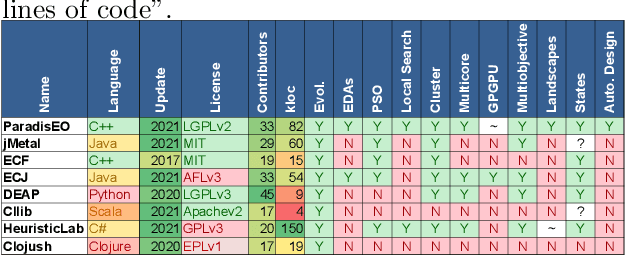
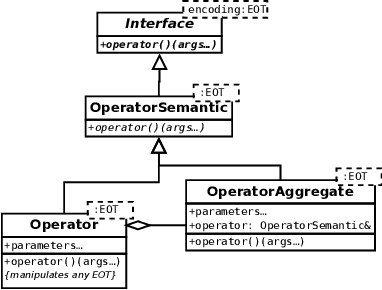
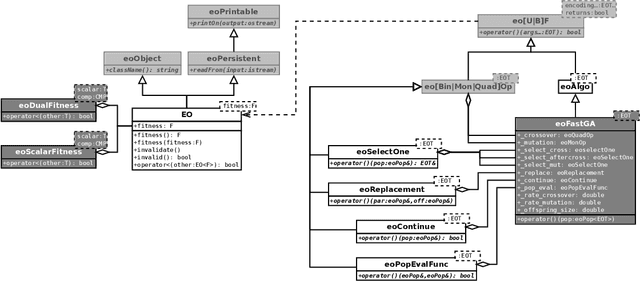
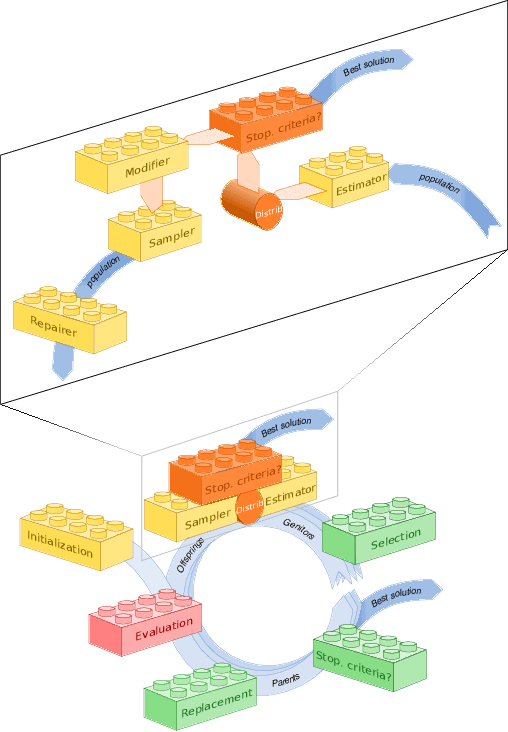
Abstract:The success of metaheuristic optimization methods has led to the development of a large variety of algorithm paradigms. However, no algorithm clearly dominates all its competitors on all problems. Instead, the underlying variety of landscapes of optimization problems calls for a variety of algorithms to solve them efficiently. It is thus of prior importance to have access to mature and flexible software frameworks which allow for an efficient exploration of the algorithm design space. Such frameworks should be flexible enough to accommodate any kind of metaheuristics, and open enough to connect with higher-level optimization, monitoring and evaluation softwares. This article summarizes the features of the ParadisEO framework, a comprehensive C++ free software which targets the development of modular metaheuristics. ParadisEO provides a highly modular architecture, a large set of components, speed of execution and automated algorithm design features, which are key to modern approaches to metaheuristics development.
Forced Evolution in Silico by Artificial Transposons and their Genetic Operators: The John Muir Ant Problem
Oct 29, 2009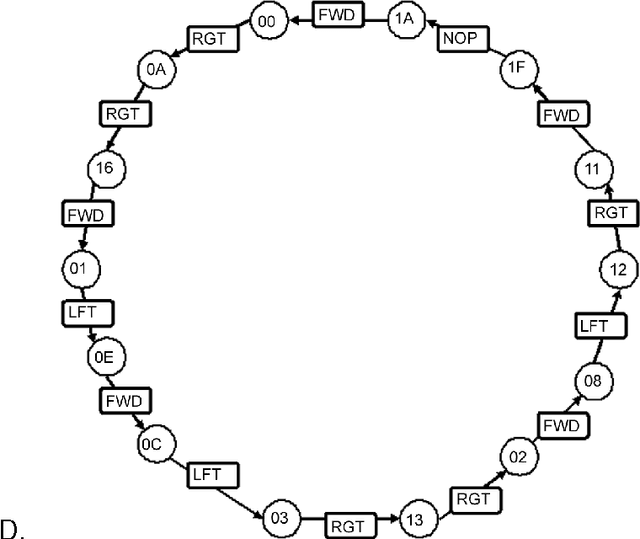

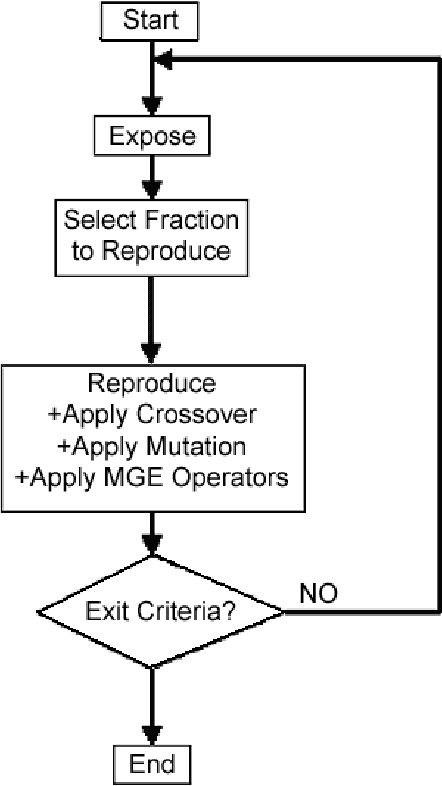

Abstract:Modern evolutionary computation utilizes heuristic optimizations based upon concepts borrowed from the Darwinian theory of natural selection. We believe that a vital direction in this field must be algorithms that model the activity of genomic parasites, such as transposons, in biological evolution. This publication is our first step in the direction of developing a minimal assortment of algorithms that simulate the role of genomic parasites. Specifically, we started in the domain of genetic algorithms (GA) and selected the Artificial Ant Problem as a test case. We define these artificial transposons as a fragment of an ant's code that possesses properties that cause it to stand apart from the rest. We concluded that artificial transposons, analogous to real transposons, are truly capable of acting as intelligent mutators that adapt in response to an evolutionary problem in the course of co-evolution with their hosts.
Who is the best connected EC researcher? Centrality analysis of the complex network of authors in evolutionary computation
Aug 15, 2007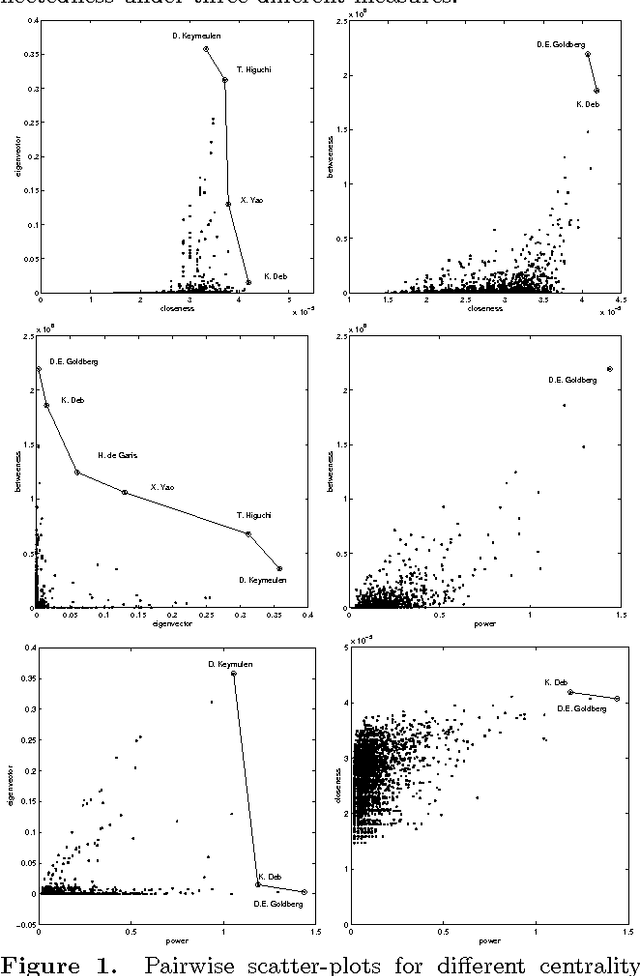
Abstract:Co-authorship graphs (that is, the graph of authors linked by co-authorship of papers) are complex networks, which expresses the dynamics of a complex system. Only recently its study has started to draw interest from the EC community, the first paper dealing with it having been published two years ago. In this paper we will study the co-authorship network of EC at a microscopic level. Our objective is ascertaining which are the most relevant nodes (i.e. authors) in it. For this purpose, we examine several metrics defined in the complex-network literature, and analyze them both in isolation and combined within a Pareto-dominance approach. The result of our analysis indicates that there are some well-known researchers that appear systematically in top rankings. This also provides some hints on the social behavior of our community.
Automatic Detection of Trends in Dynamical Text: An Evolutionary Approach
Jan 12, 2006

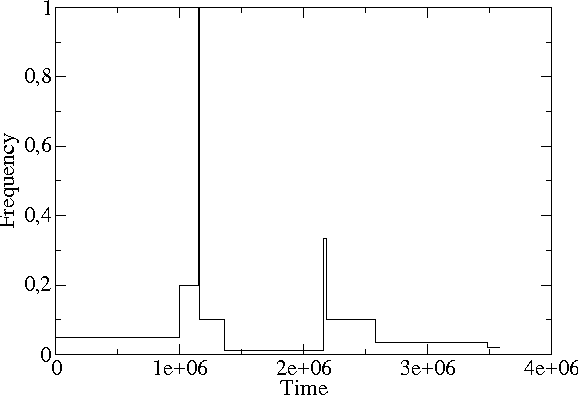

Abstract:This paper presents an evolutionary algorithm for modeling the arrival dates of document streams, which is any time-stamped collection of documents, such as newscasts, e-mails, IRC conversations, scientific journals archives and weblog postings. This algorithm assigns frequencies (number of document arrivals per time unit) to time intervals so that it produces an optimal fit to the data. The optimization is a trade off between accurately fitting the data and avoiding too many frequency changes; this way the analysis is able to find fits which ignore the noise. Classical dynamic programming algorithms are limited by memory and efficiency requirements, which can be a problem when dealing with long streams. This suggests to explore alternative search methods which allow for some degree of uncertainty to achieve tractability. Experiments have shown that the designed evolutionary algorithm is able to reach the same solution quality as those classical dynamic programming algorithms in a shorter time. We have also explored different probabilistic models to optimize the fitting of the date streams, and applied these algorithms to infer whether a new arrival increases or decreases {\em interest} in the topic the document stream is about.
Self-Organized Stigmergic Document Maps: Environment as a Mechanism for Context Learning
Dec 17, 2004
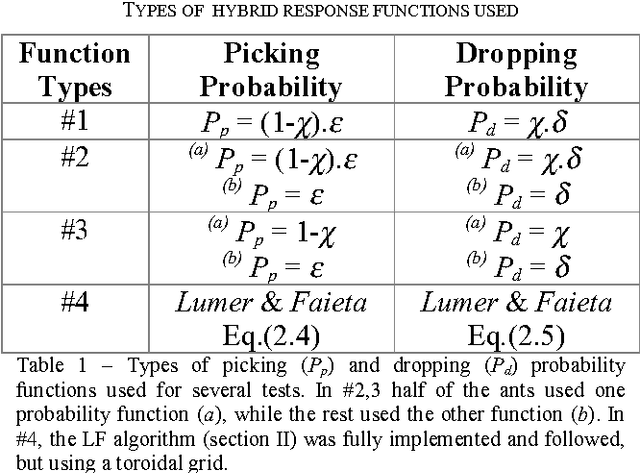


Abstract:Social insect societies and more specifically ant colonies, are distributed systems that, in spite of the simplicity of their individuals, present a highly structured social organization. As a result of this organization, ant colonies can accomplish complex tasks that in some cases exceed the individual capabilities of a single ant. The study of ant colonies behavior and of their self-organizing capabilities is of interest to knowledge retrieval/management and decision support systems sciences, because it provides models of distributed adaptive organization which are useful to solve difficult optimization, classification, and distributed control problems, among others. In the present work we overview some models derived from the observation of real ants, emphasizing the role played by stigmergy as distributed communication paradigm, and we present a novel strategy to tackle unsupervised clustering as well as data retrieval problems. The present ant clustering system (ACLUSTER) avoids not only short-term memory based strategies, as well as the use of several artificial ant types (using different speeds), present in some recent approaches. Moreover and according to our knowledge, this is also the first application of ant systems into textual document clustering. KEYWORDS: Swarm Intelligence, Ant Systems, Unsupervised Clustering, Data Retrieval, Data Mining, Distributed Computing, Document Maps, Textual Document Clustering.
* 10 pages, 5 figures, at http://alfa.ist.utl.pt/~cvrm/staff/vramos/ref_42.html
 Add to Chrome
Add to Chrome Add to Firefox
Add to Firefox Add to Edge
Add to Edge